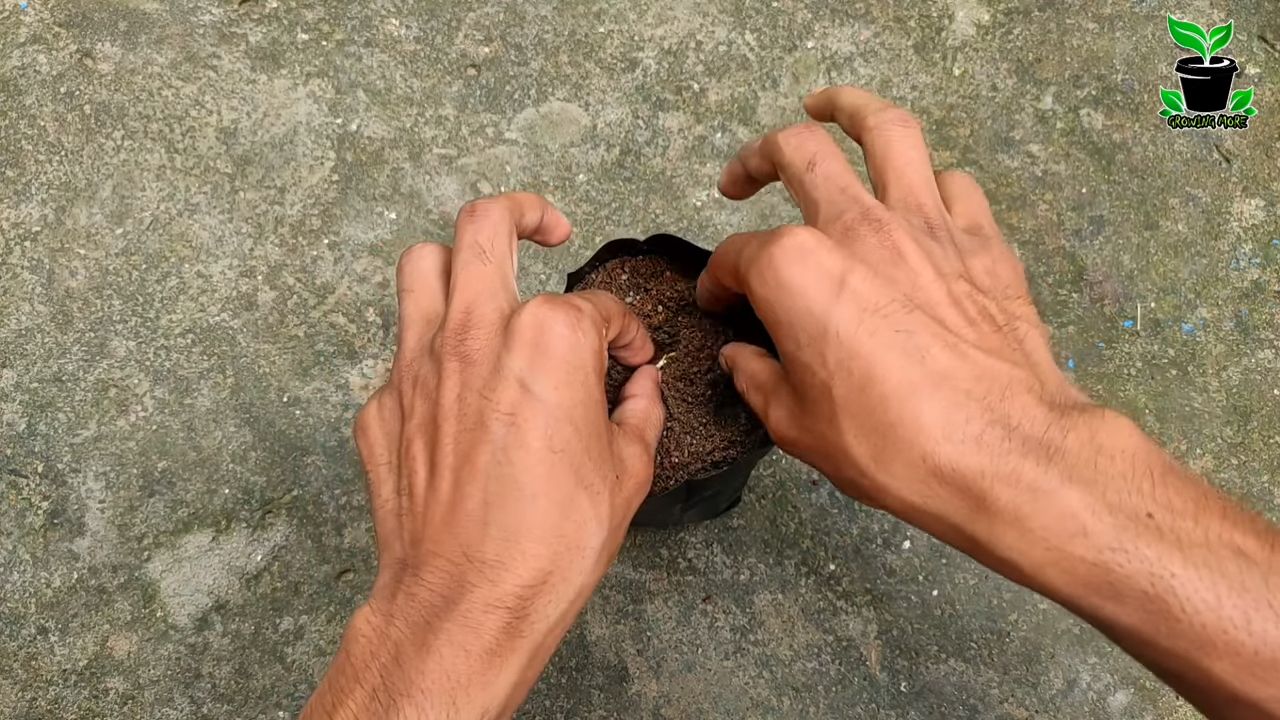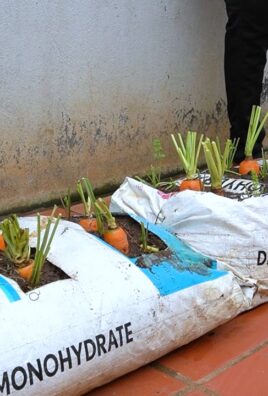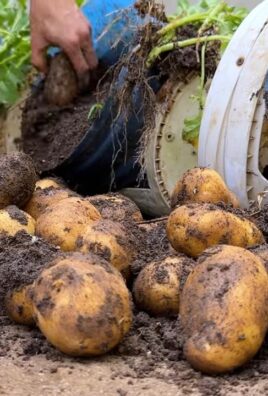Growing Peaches at Home might seem like a far-fetched dream reserved for sprawling orchards, but I’m here to tell you it’s absolutely achievable, even in your own backyard! Imagine biting into a juicy, sun-ripened peach, bursting with flavor, knowing you nurtured it from blossom to fruit. Forget those bland, store-bought peaches – this is about experiencing the real deal.
Peaches have a rich history, dating back to ancient China where they were symbols of immortality and longevity. They eventually made their way along the Silk Road, captivating cultures with their sweet taste and delicate beauty. For centuries, cultivating peaches was a treasured skill, passed down through generations.
But why should you bother with the effort of growing your own? Well, beyond the unparalleled flavor, growing peaches at home offers a sense of accomplishment and connection to nature. Plus, you control exactly what goes into your fruit, avoiding harmful pesticides and ensuring a truly organic treat. In this article, I’ll share some simple yet effective DIY tricks and hacks that will empower you to successfully cultivate these delicious stone fruits, regardless of your gardening experience. Get ready to transform your garden into a miniature peach paradise!

Growing Peaches at Home: Your DIY Guide for a Bountiful Harvest
Hey garden friends! Have you ever imagined picking juicy, sun-ripened peaches directly from your own garden? Sounds dreamy, right? I can tell you, it’s absolutely doable! Growing peaches at home is not only satisfying but also a great way to enjoy fresh, healthy fruits without relying on pesticides or long transportation routes. In this article, I’ll show you step-by-step how to plant and care for your own peach trees, so you can soon bring in your first harvest. Let’s get started!
The Basics: What You Need to Know Before Planting
Before we dive into the details, let’s clarify the most important basics. Proper preparation is the key to successful peach cultivation.
- Choosing the right variety: Not every peach variety is suitable for every climate. Find out which varieties thrive in your region. Pay attention to frost hardiness and ripening time. Some popular varieties are ‘Redhaven’, ‘Elberta’, and ‘Halehaven’.
- The location: Peach trees love the sun! Choose a location that receives at least 6-8 hours of direct sunlight per day. Additionally, the soil should be well-drained, as waterlogging harms the roots.
- The soil: Peaches prefer slightly acidic to neutral soil (pH value between 6.0 and 7.0). A loose, humus-rich soil is ideal.
- Pollination: Most peach varieties are self-fertile, meaning they do not require a second tree for pollination. However, it can still be advantageous to plant two different varieties to increase the harvest.
- The best planting time: The best time to plant peach trees is in the spring or fall. In the spring, the trees have enough time to establish roots before winter. In the fall, they can acclimate over the winter and start growing vigorously in the spring.
Step-by-Step Guide: How to Plant Your Peach Tree
Now let’s get down to business! Here is a detailed guide on how to plant your peach tree correctly:
- Prepare the planting hole: Dig a hole that is twice as wide and deep as the tree’s root ball. This loosens the soil and makes it easier for the tree to grow.
- Improve the soil: Mix the excavated soil with compost or other organic material. This improves drainage and nutrient supply.
- Prepare the tree: Carefully remove the tree from its pot and gently loosen the root ball. If the tree is root-bound (the roots are growing in a circle), carefully make cuts into the roots to encourage outward growth.
- Plant the tree: Place the tree in the hole, making sure that the graft union (the thickened part of the trunk where the desired variety was grafted onto the rootstock) is about 5-10 cm (2-4 inches) above the ground.
- Fill the hole: Fill the hole with the prepared soil mixture and press the soil down lightly.
- Water: Water the tree thoroughly to settle the soil and provide the roots with moisture.
- Mulch: Apply a layer of mulch (e.g., bark mulch or straw) around the tree to retain moisture in the soil and suppress weeds. Make sure the mulch does not touch the trunk directly to avoid rot.
- Staking: Young peach trees can be damaged by wind. Support the tree with a stake to stabilize it.
Care: How to Keep Your Peach Tree Healthy and Productive
Once planted, your peach tree needs regular care to stay healthy and deliver a bountiful harvest.
- Watering: Water the tree regularly, especially during dry periods. Make sure the soil is moist, but not wet.
- Fertilizing: Fertilize the tree in the spring with a balanced fertilizer. Follow the instructions on the packaging.
- Pruning: Pruning is crucial for the health and productivity of the peach tree. Prune the tree annually in late winter or early spring before the buds sprout. Remove dead, damaged, or crossing branches. Shape the tree into an open, vase-like crown to ensure good air circulation and sun exposure.
- Diseases and Pests: Peach trees are susceptible to various diseases and pests, such as leaf curl, brown rot, and aphids. Regularly check the tree for signs of infestation and treat it with appropriate remedies if necessary. Pay attention to organic control methods to protect the environment.
- Thinning the fruit: Peach trees can bear a lot of fruit, which can lead to small, low-quality peaches. Thin the fruit by removing some of them in the spring. Leave about 15-20 cm (6-8 inches) of space between individual peaches.
Special Challenges and Solutions
Sometimes things don’t go smoothly. Here are some common problems and how you can solve them:
- Leaf curl: This fungal disease affects the leaves, causing them to become distorted and discolored. Treat the tree in late winter or early spring with a fungicide before the buds sprout.
- Brown rot (Monilia): This fungal disease affects the flowers and fruits, causing them to rot. Remove affected flowers and fruits immediately and treat the tree with a fungicide.
- Aphids: These small pests suck the sap from the leaves and can impair the tree’s growth. Combat aphids with an insecticide or with natural enemies like ladybugs.
- Frost damage: Late frosts can damage the flowers and young fruits. Protect the tree during frost warnings with a fleece cover or a tarp.
The Harvest: The Reward for Your Efforts
After all the work, the time has finally come: the harvest! Peaches are ripe when they can be easily picked from the tree and give off a pleasant fragrance. The color of the fruit should also have changed, depending on the variety, from green to yellow or red. Pick the peaches carefully to avoid damaging them. Enjoy your homegrown peaches fresh from the tree or process them into jam, cake, or compote.
Additional Tips for a Successful Peach Harvest
- Soil analysis: Have your soil analyzed to determine the pH and nutrient content. This allows you to improve and fertilize the soil specifically.
- Irrigation system: A drip irrigation system is ideal for providing the tree with water evenly and conserving water.
- Protection from animals: Rabbits and deer can eat young peach trees. Protect the tree with a wire fence or a tree guard.
- Patience: Peach trees need several years to bear fruit. Be patient and don’t give up!
I hope this guide has encouraged you to grow your own peaches at home. It’s a rewarding experience that rewards you with delicious, homegrown fruits. Good luck and a bountiful harvest

Conclusion
So, there you have it! Growing peaches at home, while it might seem daunting at first, is an incredibly rewarding experience that brings the sweet taste of summer right to your backyard. We’ve covered the essentials, from selecting the right variety for your climate to nurturing your tree through its various stages of growth. But the real magic lies in the hands-on approach, the connection you forge with nature as you tend to your peach tree, and the unparalleled flavor of a homegrown peach, ripened to perfection under the sun.
Why is this DIY trick a must-try? Because it empowers you to control the quality and freshness of your fruit. No more relying on grocery store peaches that may have traveled long distances and lost their peak flavor. With your own peach tree, you’ll enjoy the juiciest, most flavorful peaches imaginable, bursting with natural sweetness and vitamins. Plus, you’ll be contributing to a more sustainable lifestyle by reducing your reliance on commercially grown produce.
But the benefits extend beyond just the taste. Growing your own peaches is a fantastic way to connect with nature, learn about the life cycle of a tree, and enjoy the therapeutic benefits of gardening. It’s an activity that can be shared with family and friends, creating lasting memories and a sense of accomplishment.
Now, let’s talk about variations and suggestions. While we’ve focused on the core principles of peach tree care, there’s always room for experimentation. Consider trying different pruning techniques to optimize fruit production. Explore organic pest control methods to protect your tree from unwanted visitors. And don’t be afraid to get creative with your fertilization strategies, using compost tea or other natural amendments to nourish your tree.
For those with limited space, dwarf peach varieties are an excellent option. These compact trees can be grown in containers on patios or balconies, bringing the joy of homegrown peaches to even the smallest of spaces. You can also explore espalier techniques, training your peach tree to grow flat against a wall or fence, maximizing sunlight exposure and creating a beautiful focal point in your garden.
And remember, patience is key. Peach trees take time to mature and produce fruit. But the wait is well worth it. As you watch your tree grow and develop, you’ll feel a sense of pride and anticipation, knowing that you’re nurturing something special.
We wholeheartedly encourage you to give this DIY trick a try. Start small, do your research, and don’t be afraid to ask for help. There are countless resources available online and in your local community to support you on your peach-growing journey.
Once you’ve harvested your first crop of homegrown peaches, we’d love to hear about your experience. Share your photos, tips, and stories with us in the comments below. Let’s create a community of peach-growing enthusiasts, sharing our knowledge and inspiring others to embrace the joy of growing their own food.
So, grab your gardening gloves, choose your peach variety, and get ready to embark on a delicious adventure. The taste of homegrown peaches awaits! Remember, the key to success lies in understanding the specific needs of your peach tree and providing it with the care and attention it deserves. With a little effort and dedication, you’ll be enjoying the fruits of your labor for years to come. And who knows, you might even inspire your neighbors to start growing their own peaches too!
Frequently Asked Questions (FAQ)
What is the best time of year to plant a peach tree?
The ideal time to plant a peach tree is in the early spring or late fall, when the tree is dormant. This allows the tree to establish its roots before the stresses of summer heat or winter cold set in. Planting in the spring gives the tree the entire growing season to adjust to its new environment. Fall planting allows the roots to grow during the cooler months, giving the tree a head start in the spring. Avoid planting during the heat of summer or when the ground is frozen.
How much sunlight does a peach tree need?
Peach trees require at least 6-8 hours of direct sunlight per day to thrive and produce abundant fruit. Choose a planting location that receives full sun throughout the day. If your tree is shaded for a significant portion of the day, it may not produce as much fruit, and the fruit that it does produce may be smaller and less flavorful.
What kind of soil is best for peach trees?
Peach trees prefer well-drained soil that is rich in organic matter. The soil should be slightly acidic, with a pH between 6.0 and 6.5. Avoid planting peach trees in heavy clay soil, as this can lead to root rot. If your soil is heavy clay, amend it with compost, peat moss, or other organic matter to improve drainage.
How often should I water my peach tree?
Water your peach tree deeply and regularly, especially during dry periods. Young trees need more frequent watering than established trees. Water deeply at the base of the tree, avoiding wetting the foliage, which can promote fungal diseases. As a general rule, water your peach tree when the top inch of soil feels dry to the touch. During hot, dry weather, you may need to water more frequently.
How do I prune a peach tree?
Pruning is essential for maintaining the health and productivity of your peach tree. Prune your tree in late winter or early spring, before new growth begins. Remove any dead, damaged, or diseased branches. Thin out the canopy to allow sunlight to penetrate to the interior of the tree. Prune to maintain a vase-shaped structure, which promotes good air circulation and fruit production.
What are some common pests and diseases that affect peach trees?
Peach trees are susceptible to a variety of pests and diseases, including peach tree borers, aphids, scale, brown rot, and peach leaf curl. Monitor your tree regularly for signs of pests or diseases. Use organic pest control methods, such as insecticidal soap or neem oil, to control pests. Prune away any diseased branches and dispose of them properly. Apply a fungicide in the fall and spring to prevent fungal diseases.
How long does it take for a peach tree to produce fruit?
Peach trees typically begin to produce fruit within 2-4 years of planting, depending on the variety and growing conditions. Dwarf peach trees may produce fruit sooner than standard-sized trees. Be patient and provide your tree with the care it needs, and you’ll be rewarded with delicious homegrown peaches in due time.
Can I grow a peach tree in a container?
Yes, you can grow a dwarf peach tree in a container. Choose a large container with good drainage. Use a well-draining potting mix that is rich in organic matter. Water regularly and fertilize as needed. Place the container in a location that receives at least 6-8 hours of direct sunlight per day. Container-grown peach trees may need to be protected from frost in colder climates.
How do I know when my peaches are ripe?
Peaches are ripe when they are slightly soft to the touch and have a fragrant aroma. The skin color will also change from green to yellow or red, depending on the variety. Gently twist the peach from the branch; if it comes off easily, it’s ripe. Ripe peaches should be eaten or processed immediately, as they do not store well.
What are some good peach varieties for home growing?
There are many excellent peach varieties for home growing, depending on your climate and preferences. Some popular varieties include ‘Elberta,’ ‘Redhaven,’ ‘Reliance,’ and ‘Contender.’ Choose a variety that is well-suited to your local climate and that is resistant to common peach tree diseases. Consult with your local nursery or extension office for recommendations on the best peach varieties for your area.




Leave a Comment